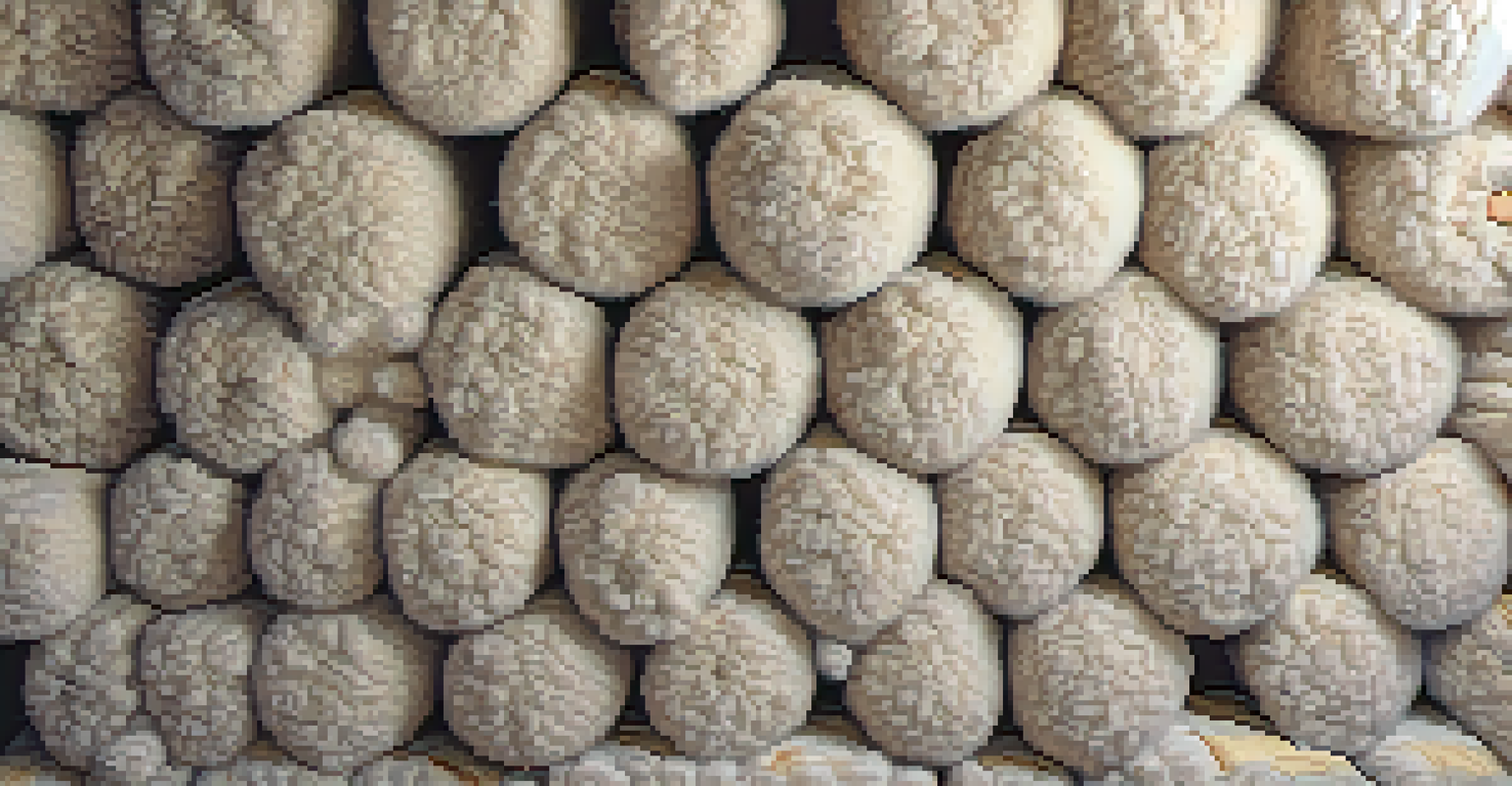Using Natural Insulation Materials for Better Efficiency

Understanding Natural Insulation Materials and Their Benefits
Natural insulation materials are derived from renewable resources, making them an eco-friendly choice for homeowners. Unlike synthetic options, these materials often have a smaller carbon footprint and can help reduce energy consumption. For instance, wool, cotton, and cellulose are popular choices that not only insulate but also regulate moisture levels in your home.
The ultimate aim of farming is not the growing of crops, but the cultivation and perfection of human beings.
One of the primary benefits of using natural insulation is its breathability. This means that it can help manage indoor air quality by allowing moisture to escape, reducing the risk of mold growth. Additionally, many natural insulators are treated with non-toxic fire retardants, ensuring safety without compromising on performance.
Investing in natural insulation can lead to long-term savings on energy bills. By effectively regulating temperature, these materials keep your home warmer in winter and cooler in summer, ultimately leading to lower heating and cooling costs.
Popular Types of Natural Insulation Materials
There are several types of natural insulation materials available, each with unique properties. For example, cellulose is made from recycled paper and is known for its excellent thermal performance and sound absorption capabilities. In contrast, sheep's wool is a natural insulator that can absorb moisture without losing its insulating properties, making it great for humid climates.

Another popular option is hemp insulation, which is lightweight, mold-resistant, and has a high thermal resistance. Additionally, straw bales can be used for insulation in walls, providing a sustainable and cost-effective solution for building projects. Each of these materials offers distinct advantages depending on your specific needs.
Eco-Friendly Benefits of Natural Insulation
Natural insulation materials, derived from renewable resources, reduce energy consumption and promote a healthier home environment.
When choosing an insulation material, consider factors like climate, building design, and your budget. By understanding the characteristics of each type, you can make an informed decision that aligns with your goals for energy efficiency and sustainability.
Sustainability and Environmental Impact of Natural Insulation
Using natural insulation materials contributes positively to the environment by minimizing waste and reducing reliance on fossil fuels. Many natural insulators are biodegradable and can be sourced locally, which lowers transportation emissions. This not only benefits the planet but supports local economies as well.
Sustainability is not a destination, but a journey.
Moreover, natural materials often have a lower embodied energy compared to synthetic options. Embodied energy refers to the total energy required to produce and transport a material. By choosing materials with lower embodied energy, you can significantly reduce the overall environmental impact of your building project.
Incorporating natural insulation into your home is a step toward a more sustainable lifestyle. It reflects a growing awareness of the importance of eco-friendly living and can inspire others in your community to make similar choices.
Cost Considerations of Natural Insulation
While the upfront cost of natural insulation materials may be higher than traditional options, it's essential to look at the long-term savings they can provide. Natural insulators often lead to lower energy bills due to their superior thermal performance. Moreover, many of these materials can contribute to improved home resale value, making them a wise investment.
It's also worth noting that some natural insulation options may qualify for government incentives or rebates. These programs can help offset the initial costs, making it easier for homeowners to choose sustainable materials. Always check for local incentives that could make your investment more affordable.
Long-Term Savings on Energy Bills
Investing in natural insulation can lead to significant savings on heating and cooling costs over time.
Ultimately, when considering costs, it's crucial to evaluate the overall benefits of natural insulation. From energy savings to environmental impact, these factors can significantly enhance the value of your investment.
Installation Tips for Natural Insulation
Installing natural insulation can be a straightforward process, but it's essential to follow best practices to ensure optimal performance. First, always read the manufacturer's guidelines and recommendations for installation. This will help you avoid common pitfalls and ensure that the material performs as intended.
Consider hiring a professional if you're unsure about the installation process. While some natural insulators can be DIY-friendly, others may require specialized knowledge or tools. A professional can ensure that the insulation is installed correctly, maximizing its effectiveness and longevity.
Additionally, pay attention to air sealing before installing insulation. Proper air sealing can prevent drafts and improve energy efficiency, enhancing the benefits of your natural insulation. Taking these steps can lead to a more comfortable and energy-efficient home.
Comparing Natural Insulation with Conventional Options
When comparing natural insulation to conventional materials, several key differences emerge. Conventional insulation, like fiberglass, is often made from non-renewable resources and can release harmful chemicals into the air. In contrast, natural insulation materials are typically non-toxic and contribute to healthier indoor environments.
Furthermore, natural insulation materials often outperform their conventional counterparts in terms of thermal resistance and moisture regulation. For instance, while fiberglass may lose its effectiveness when wet, materials like wool or cellulose can absorb moisture without compromising their insulating properties. This makes natural options more resilient in various climates.
Sustainable Choice for Homeowners
Using natural insulation materials minimizes environmental impact and supports local economies through eco-friendly building practices.
Ultimately, the choice between natural and conventional insulation depends on your priorities. If sustainability, indoor air quality, and long-term energy savings are essential to you, natural insulation may be the right fit.
Future Trends in Natural Insulation Materials
The demand for natural insulation materials is on the rise as homeowners and builders increasingly prioritize sustainability. As this trend continues, manufacturers are likely to innovate and develop even more effective and efficient natural insulation solutions. Future materials may incorporate advanced technologies to enhance performance while maintaining eco-friendliness.
Additionally, we may see a greater emphasis on local sourcing of natural insulation materials. Supporting local suppliers not only reduces transportation emissions but also strengthens community ties. This shift could lead to more sustainable building practices and a stronger focus on regional resources.

As awareness of climate change and energy efficiency grows, the use of natural insulation is likely to become more mainstream. This shift presents an exciting opportunity for homeowners to contribute to a more sustainable future while enjoying the benefits of improved energy efficiency in their homes.